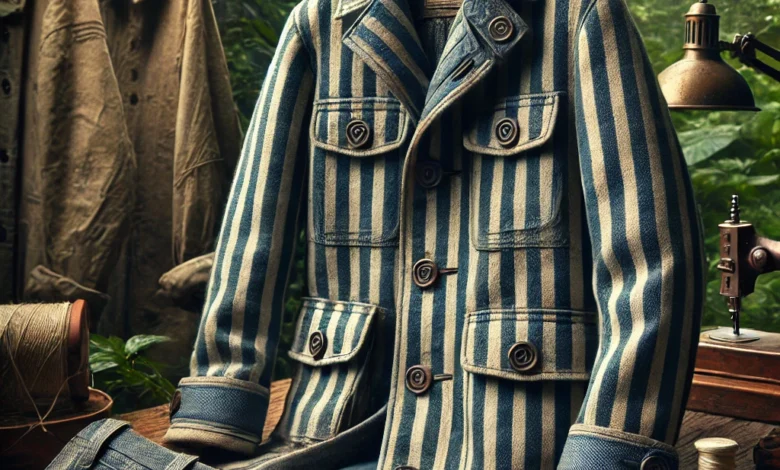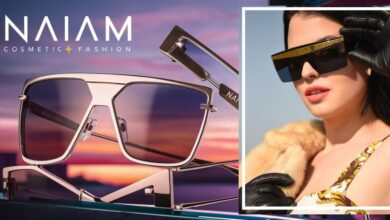The Timeless Appeal of Hickory Coat Fabricoat: A Heritage Fabric with Modern Utility

Hickory cloth, often celebrated for its durability and aesthetic charm, has a rich history that weaves through the industrial revolutions and into modern-day fashion. A fabric originally designed for utility, its transformation into a style statement is nothing short of fascinating. Today, products like the hickory coat fabricoat are revitalizing this heritage material, blending the fabric’s rugged functionality with contemporary design sensibilities. This article explores the history, unique qualities, and current applications of hickory cloth, with a special focus on how innovations like the hickory coat fabricoat have redefined its appeal.
The Origins of Hickory Cloth
Hickory cloth, also known as hickory stripe fabric, traces its roots to the United States in the late 19th and early 20th centuries. It is characterized by its distinctive blue and white striped pattern, reminiscent of railroad tracks. This visual feature earned it the nickname “railroad stripe fabric,” as it became the uniform fabric of choice for railroad workers and engineers.
The fabric’s name is believed to derive from the hickory tree, symbolizing strength and resilience, qualities mirrored in the cloth itself. Its dense weave and sturdy construction made it ideal for workwear during an era when garments had to withstand the rigors of manual labor. As industries expanded, the demand for robust and affordable fabrics like hickory cloth surged, cementing its place in American workwear history.
The Evolution of Workwear: From Railroads to Runways
Initially, hickory cloth was primarily used in overalls, work shirts, and caps for labor-intensive professions. The fabric’s lightweight yet durable nature provided the perfect balance of comfort and protection. Railroad engineers, mechanics, and farmers embraced the material for its practicality, while its striped pattern became a visual identifier for hard-working individuals.
As the decades passed, workwear began influencing mainstream fashion. The functionality and rugged charm of hickory cloth caught the attention of designers looking to incorporate utilitarian aesthetics into their collections. The introduction of pieces like the hickory coat fabricoat represents a modern twist on this classic fabric, bridging the gap between its industrial roots and contemporary style.
Read Also: Decky Foam Caps: A Trendy Staple in Modern Fashion
What Makes Hickory Cloth Unique?
The enduring popularity of hickory cloth can be attributed to several key characteristics:
- Durability: The dense cotton twill weave makes hickory cloth exceptionally resistant to wear and tear. This quality ensures that garments made from this fabric can withstand the demands of heavy use, making it a favorite for workwear and outdoor clothing.
- Breathability: Despite its sturdiness, hickory cloth is lightweight and breathable. This feature enhances comfort, especially in warm climates or during physically demanding activities.
- Aesthetic Appeal: The iconic blue and white stripes give the fabric a timeless look that is both functional and stylish. This visual charm has made it a popular choice for vintage-inspired fashion.
- Versatility: Hickory cloth’s adaptability is another factor in its appeal. While it was traditionally used for workwear, it now finds applications in jackets, coats, shirts, and even accessories.
- Sustainability: As a natural cotton fabric, hickory cloth aligns with the growing demand for eco-friendly materials. Its durability also reduces the need for frequent replacements, contributing to sustainable consumption.
Hickory Coat Fabricoat: Redefining a Classic
Among the many modern adaptations of hickory cloth, the hickory coat fabricoat stands out as a testament to the fabric’s versatility and enduring charm. This innovative garment combines the traditional qualities of hickory cloth with contemporary design elements, making it a must-have for fashion enthusiasts and practical users alike.
The hickory coat fabricoat is designed to provide maximum utility without compromising on style. It often features functional details like multiple pockets, reinforced stitching, and adjustable cuffs, catering to both urban and outdoor lifestyles. Its aesthetic appeal lies in its ability to evoke nostalgia while remaining relevant in modern wardrobes. By embracing the heritage of hickory cloth, the hickory coat fabricoat exemplifies the seamless fusion of tradition and innovation.
Applications of Hickory Cloth in Modern Fashion
The resurgence of hickory cloth in recent years highlights its versatility and appeal across various fashion segments. Here are some ways in which this fabric is making waves:
- Outerwear: The hickory coat fabricoat is a prime example of how hickory cloth is being reinvented for contemporary outerwear. These coats offer durability, warmth, and a classic aesthetic, making them suitable for both casual and semi-formal settings.
- Workwear-Inspired Fashion: The workwear trend has gained significant traction in recent years, with hickory cloth playing a central role. Designers are incorporating the fabric into jumpsuits, chore jackets, and utility vests, celebrating its industrial roots.
- Streetwear: The rugged charm of hickory cloth has found a home in streetwear, where its distinctive stripes add visual interest to urban-inspired designs. Brands are experimenting with oversized silhouettes and bold accents to create statement pieces.
- Accessories: Beyond clothing, hickory cloth is also being used in accessories like bags, hats, and aprons. These items combine practicality with a touch of vintage flair, appealing to a wide audience.
- Sustainable Fashion: As consumers become more conscious of their environmental impact, hickory cloth’s durability and natural composition make it a desirable choice for sustainable fashion brands. The fabric’s longevity ensures that garments can be worn for years, reducing waste.
Caring for Hickory Cloth Garments
To maintain the quality and appearance of hickory cloth garments like the hickory coat fabricoat, proper care is essential. Here are some tips:
- Washing: Always follow the care instructions provided by the manufacturer. In general, hickory cloth can be machine washed on a gentle cycle using cold water to prevent shrinkage.
- Drying: Avoid high heat when drying hickory cloth garments. Air drying or using a low-heat setting in the dryer is recommended to preserve the fabric’s integrity.
- Ironing: If needed, iron hickory cloth garments on a medium heat setting. Be cautious with high heat, as it may damage the fabric.
- Storage: Store hickory cloth garments in a cool, dry place to prevent moisture and mildew. Use padded hangers for coats to maintain their shape.
The Future of Hickory Cloth
The enduring appeal of hickory cloth lies in its ability to adapt to changing fashion trends while retaining its core qualities. As innovations like the hickory coat fabricoat continue to gain popularity, the fabric is poised to become a staple in modern wardrobes. Its versatility, sustainability, and timeless charm make it a fabric that transcends generations, offering something for everyone.
In the years to come, we can expect to see more creative applications of hickory cloth, from high-fashion collaborations to everyday essentials. Designers will likely continue to experiment with the fabric, pushing the boundaries of its potential while honoring its rich history.
Conclusion
Hickory cloth is more than just a fabric; it is a symbol of resilience, heritage, and timeless style. From its humble beginnings as a workwear staple to its modern-day reinvention in pieces like the hickory coat fabricoat, this material has proven its enduring relevance. As consumers seek durable, sustainable, and aesthetically pleasing options, hickory cloth stands out as a fabric that checks all the boxes.
Whether you’re drawn to its historical significance, practical qualities, or vintage-inspired charm, hickory cloth offers something unique and valuable. The next time you come across a hickory coat fabricoat or any garment made from this iconic fabric, you’ll not only be investing in a piece of history but also embracing a timeless trend that continues to evolve.








